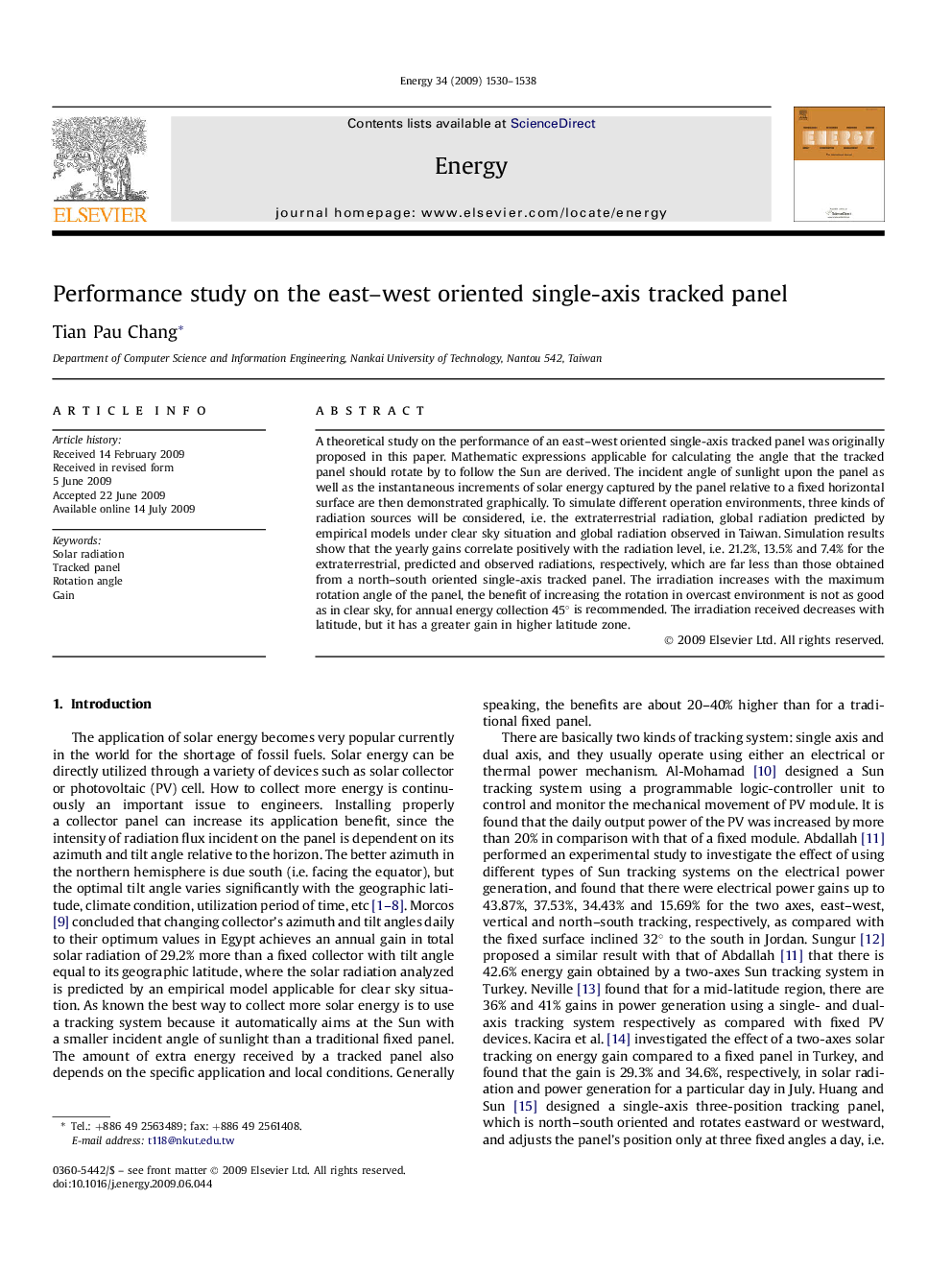| Article ID | Journal | Published Year | Pages | File Type |
|---|---|---|---|---|
| 1735622 | Energy | 2009 | 9 Pages |
Abstract
A theoretical study on the performance of an east-west oriented single-axis tracked panel was originally proposed in this paper. Mathematic expressions applicable for calculating the angle that the tracked panel should rotate by to follow the Sun are derived. The incident angle of sunlight upon the panel as well as the instantaneous increments of solar energy captured by the panel relative to a fixed horizontal surface are then demonstrated graphically. To simulate different operation environments, three kinds of radiation sources will be considered, i.e. the extraterrestrial radiation, global radiation predicted by empirical models under clear sky situation and global radiation observed in Taiwan. Simulation results show that the yearly gains correlate positively with the radiation level, i.e. 21.2%, 13.5% and 7.4% for the extraterrestrial, predicted and observed radiations, respectively, which are far less than those obtained from a north-south oriented single-axis tracked panel. The irradiation increases with the maximum rotation angle of the panel, the benefit of increasing the rotation in overcast environment is not as good as in clear sky, for annual energy collection 45° is recommended. The irradiation received decreases with latitude, but it has a greater gain in higher latitude zone.
Related Topics
Physical Sciences and Engineering
Energy
Energy (General)
Authors
Tian Pau Chang,
